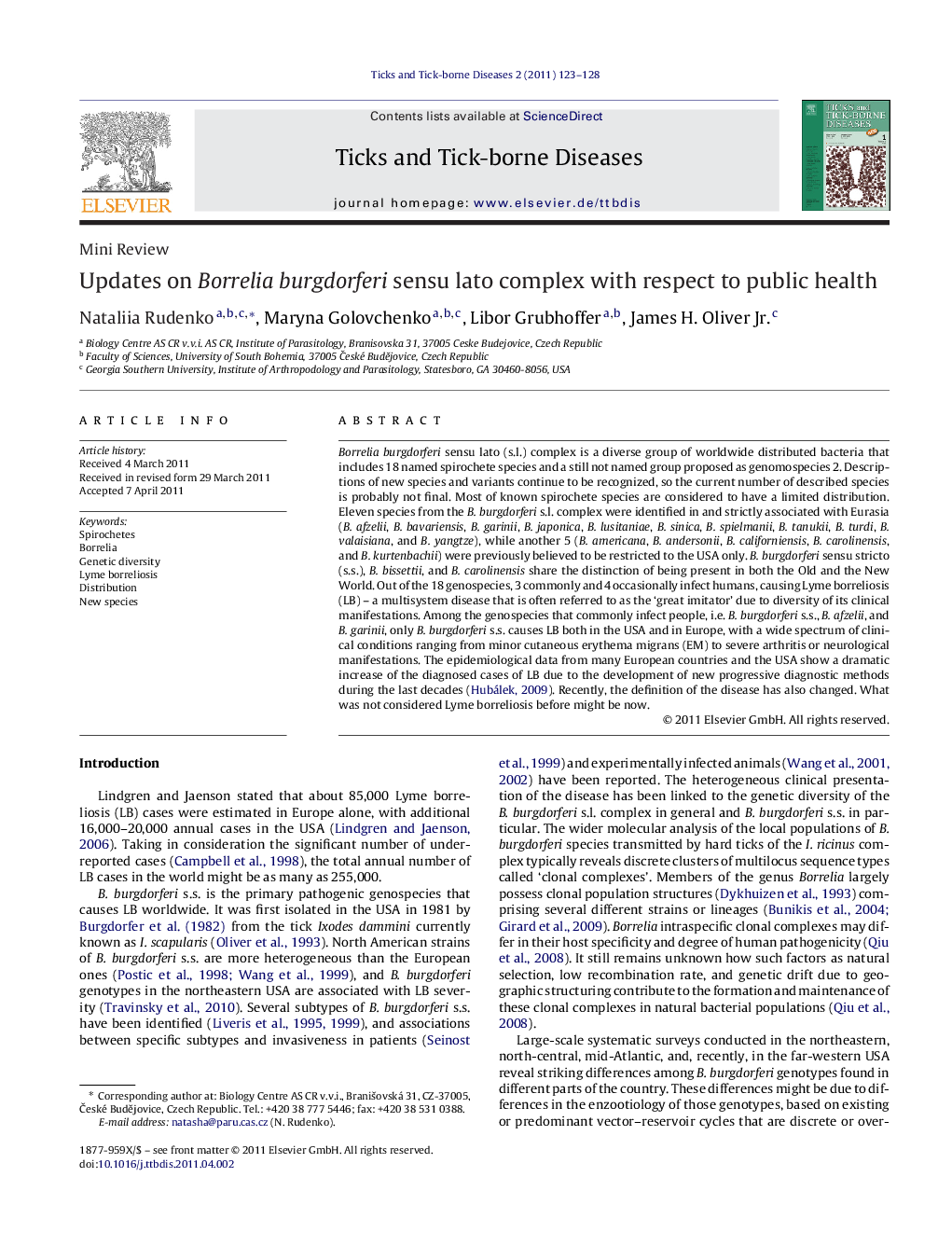| Article ID | Journal | Published Year | Pages | File Type |
|---|---|---|---|---|
| 2473948 | Ticks and Tick-borne Diseases | 2011 | 6 Pages |
Borrelia burgdorferi sensu lato (s.l.) complex is a diverse group of worldwide distributed bacteria that includes 18 named spirochete species and a still not named group proposed as genomospecies 2. Descriptions of new species and variants continue to be recognized, so the current number of described species is probably not final. Most of known spirochete species are considered to have a limited distribution. Eleven species from the B. burgdorferi s.l. complex were identified in and strictly associated with Eurasia (B. afzelii, B. bavariensis, B. garinii, B. japonica, B. lusitaniae, B. sinica, B. spielmanii, B. tanukii, B. turdi, B. valaisiana, and B. yangtze), while another 5 (B. americana, B. andersonii, B. californiensis, B. carolinensis, and B. kurtenbachii) were previously believed to be restricted to the USA only. B. burgdorferi sensu stricto (s.s.), B. bissettii, and B. carolinensis share the distinction of being present in both the Old and the New World. Out of the 18 genospecies, 3 commonly and 4 occasionally infect humans, causing Lyme borreliosis (LB) – a multisystem disease that is often referred to as the ‘great imitator’ due to diversity of its clinical manifestations. Among the genospecies that commonly infect people, i.e. B. burgdorferi s.s., B. afzelii, and B. garinii, only B. burgdorferi s.s. causes LB both in the USA and in Europe, with a wide spectrum of clinical conditions ranging from minor cutaneous erythema migrans (EM) to severe arthritis or neurological manifestations. The epidemiological data from many European countries and the USA show a dramatic increase of the diagnosed cases of LB due to the development of new progressive diagnostic methods during the last decades ( Hubálek, 2009). Recently, the definition of the disease has also changed. What was not considered Lyme borreliosis before might be now.
